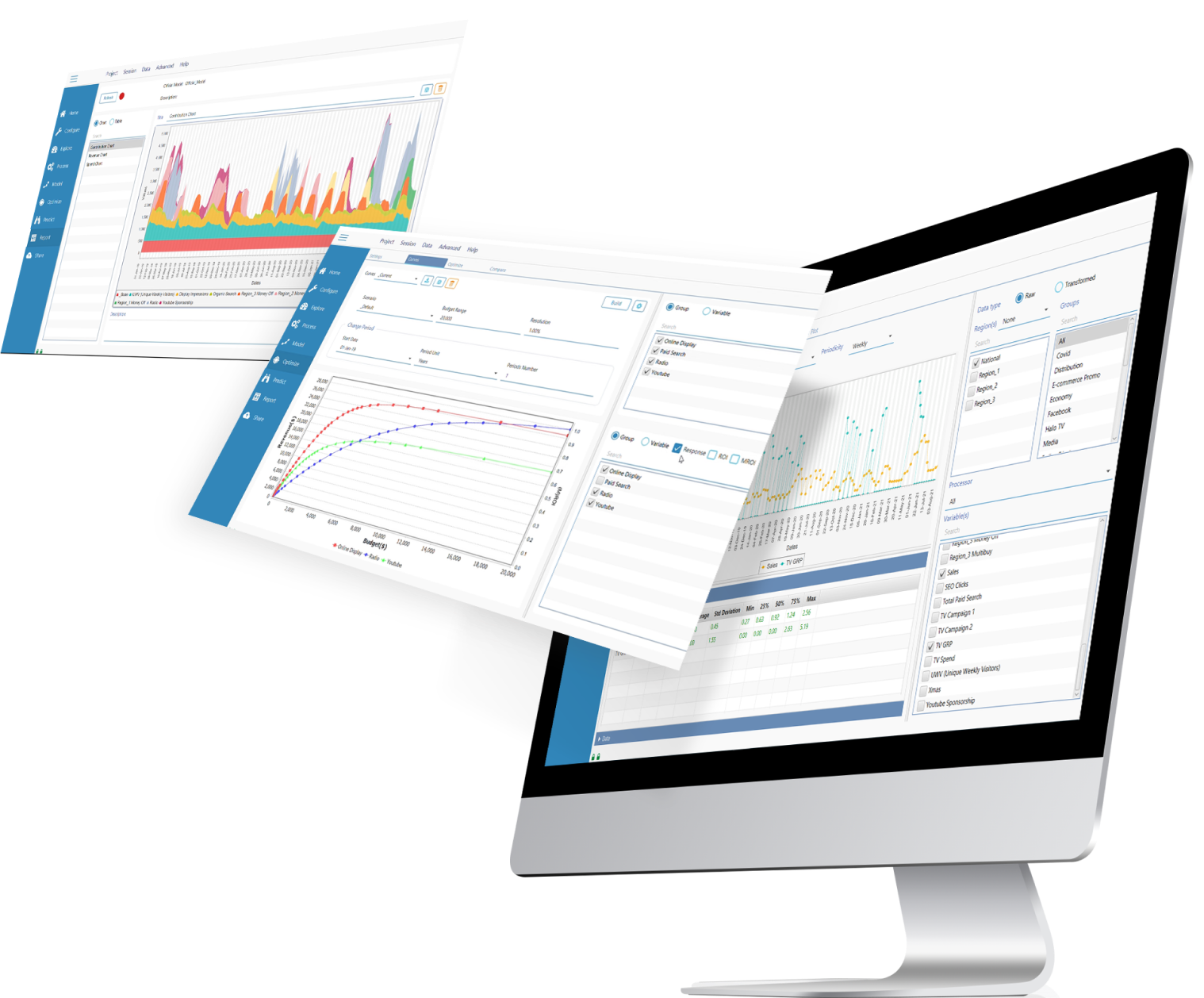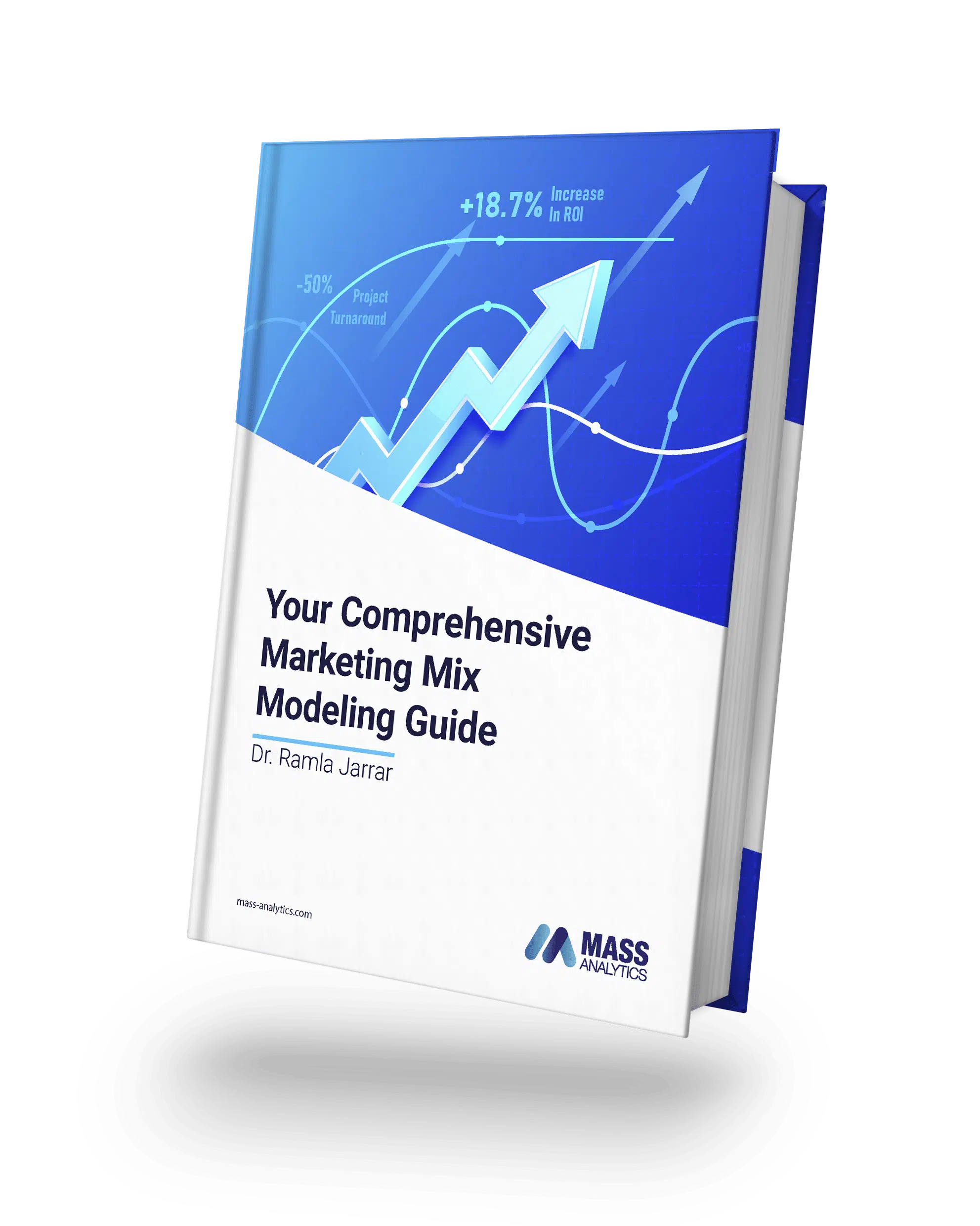Should Marketing Mix Modeling Leave the Scene of Marketing Mix Modeling to Pave the Way to Multi-Touch Attribution?
Digital advertising spend topped $72.09 billion in 2016, a gain of 20.9% over 2015, according to eMarketer.
TV spending grew in 2016 to $71.29 billion: Digital ad spending surpassed TV spending for the first time in US history! The world is quickly becoming digital as customers are consuming online content faster than ever. It is therefore essential that marketing departments adapt promptly to this new setting.
Now more than ever measurement and accountability are becoming fundamental components of the whole marketing strategy. Today’s advertisers generally turn to Multitouch Attribution and Marketing Mix Modeling methods (MMM) to help them understand and quantify the true impact of their marketing efforts be it online or offline. Some have heralded the demise of MMM, declaring that this decades-old technique should leave the marketing effectiveness measurement scene to pave the way for MTA, given that the world is becoming increasingly digital. Are they right? Read on to find out.
What is the Difference Between Marketing Mix Modeling and Multi-Touch Attribution?
First, it may help to define our terms: If attribution is the process of assigning a causal link between marketing activity and the sale, then both MMM and MTA are subsets of attribution.
The main difference between Marketing Mix Modeling and Multitouch Attribution is that the former is an aggregated top-down approach whereas the latter is a disaggregated bottom-up approach. Marketing Mix Modeling relies on collecting aggregated data (as opposed to customer level data) from different sources to uncover the impact of marketing and non-marketing activities on a specific KPI, e.g. sales, unique weekly visitors, brand awareness, etc, Econometrics methods such as regression are widely used. Typically, this looks at building a model based on historical sales’ movements and statistically estimates the relationship between the modeled KPI and the different factors driving sales.
By controlling for all exogenous factors, these methods can disentangle the impact of media and marketing activities on sales, calculate ROI by channel and therefore help to optimize budgets. MTA, on the other hand, focuses on customer level data and tries to uncover the digital touchpoints that contributed the most to the customer conversion.
In fact, thanks to the development of Internet technologies, the online advertiser can follow users’ exposure to advertisements using cookie data. Cookies don’t work so well or not at all in mobile apps, where mobile users spend 80% of their time. Nevertheless, Google’s single-sign-on (SSO) and the Google Ad ID; Apple’s IDFA (identifier for advertisers); and Facebook’s SSO allows for accurate tracking of users across devices. Furthermore, companies such as LiveRamp and Experian can provide advertisers with details of everyday online transactions with only a single email address.
This creates the possibility to combine this information with online customers. These two pieces of information, when put together, enable marketers to understand the customers’ journey to conversion thoroughly. Digital attribution relies on the identification of a set of user actions or “touchpoints” that contribute in some manner to a desired business goal, and then the assignment of a value to each of these events. The credits assigned can be calculated by different methods. We cite Single Touch Attribution methods such as Last Click and First Click. More realistic approaches include Multi-Touch Attribution, which can be, either Rule Based (e.g. Linear, U-Shaped, Decay, etc,) or more sophisticated such as algorithmic attribution which uses advanced statistics and machine learning techniques to objectively determine and weigh the impact of the different touchpoints on the customer’s journey towards conversion.
Should MMM Leave the Scene of Marketing Measurement to Pave the Way to MTA?
We don’t think so. First of all, according to the decision tree presented in the article “Market Guide for Attribution and Marketing Mix Modeling”-Sep 2016, (shown below for your convenience) Marketing Mix Modeling remains the method of choice when the advertiser trades offline and when most of the media activity is either offline or mixed (i.e. both online and offline).
Marketing Mix Modeling is also the right technique when the advertiser’s sales activity is mixed: i.e. online and offline trade. In fact, thanks to advanced econometrics techniques like the nested modeling approach and access to proprietary software offering the capability to calculate the direct and indirect impact of each media channel (attribution screen), it becomes very easy to use MMM techniques to measure the impact of online channels on offline activity.
Marketing Mix Modeling, either on its own or combined with MTA (as in the Unified Model) is the method of choice in most real- world situations, the exception being scenarios were all advertising and sales is online and the advertiser has access to good, reliable user-level data. It takes skilled talent to navigate the methods and models available and select the right approach. The above decision tree acts as a rough guide, only. Often, the line between software and services is blurred in this market. However, experience shows that those who turn to specialist software can take advantage of the automation and the specialist features that these offer to turn complex models into insight and thus deliver real value.
The Future of Digital Attribution
As noted last week, a new report – The State of Marketing Attribution 2017, shows the implementation of attribution has risen from 31% to 39% amongst brands and their agencies. Yet, only 30% of those using attribution are acting upon its insights. The report, the output of AdRoll and Econsultancy, found there is a misunderstanding amongst advertisers as to the nature of successful attribution.
Surprisingly, most are still using simple models such as last-click attribution or first-click attribution, instead of more objective attribution techniques like the algorithmic. Barriers to successful implementation of attribution appear to be centred around technology and staffing. According to the report, respondents don’t have faith that their technology will meet their attribution needs, and 77% say they can’t find the right staff.
The inability to “create a culture of measurement and accuracy” was apparently cited by 80% of brands and 71% of agencies.
Clearly, there is room for agencies and their clients to get much more out of MTA and MMM, perhaps by using more powerful models and specialist software and thereby gain a better handle on the effectiveness of their media expenditure.
Digital advertising spend topped $72.09 billion in 2016, a gain of 20.9% over 2015, according to eMarketer. TV spending grew in 2016 to $71.29 billion: Digital ad spending surpassed TV spending for the first time in US history! The world is quickly becoming digital as customers are consuming online content faster than ever. It is therefore essential that marketing departments adapt promptly to this new setting.
Now more than ever measurement and accountability are becoming fundamental components of the whole marketing strategy. Today’s advertisers generally turn to Multitouch Attribution and Marketing Mix Modeling methods(MMM) to help them understand and quantify the true impact of their marketing efforts be it online or offline.
See more:
- Marketing Mix Modeling Expert’s Input on the Covid-19: Baidy SallDePracans, Advanced Analytics Manager at GroupM France
- Marketing Mix Modeling Expert’s Input on the Covid-19: Phil Weissman, Independent Marketing, Analytics, and Business Intelligence Consultant
- How did we adapt to COVID-19?
- Marketing Mix Modeling Experts’ Input on the Covid-19: Christophe Brossard and Charles Xavier, Partners at Metrics720
- Media Consumption & Job Security and the Consequences of the Covid-19: Ken Gamage, Director, Data Strategy, at Cossette Media
- Marketing Mix Modeling Expert’s Input on the COVID-19: Krishnan Nurani, Senior Director & Lead, Business Science at MediaCom Singapore

Discover Our Marketing Mix Modeling Software
Our Marketing Mix Modeling software MassTer offers a modern approach to running Marketing Mix Modeling projects. With its user-friendly and intuitive interface, MassTer helps analytical teams perform MMM projects more efficiently.







